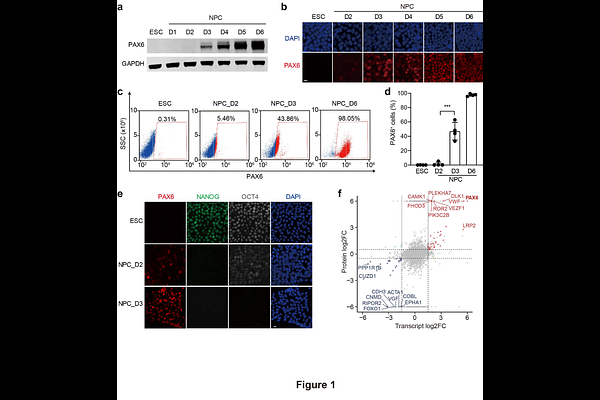Post-replicative initial expression of the cell fate regulator PAX6 during neuroectoderm differentiation

Post-replicative initial expression of the cell fate regulator PAX6 during neuroectoderm differentiation
Hu, S.; Kou, R.; Su, Z.; Li, G.; Qi, S.; Zhang, Y.; Wang, H.; Chen, L.; Yu, H.
AbstractThe development of multicellular organisms requires precise coordination between cell division and differentiation. Cell division generates the necessary number of cells, while differentiation creates distinct cell identities, forming tissues and organs. The transcription factors SOX2 and PAX6 specify neuroepithelial cells, the earliest neural progenitor cells (NPCs) during brain development. How lineage specification is coordinated with the cell cycle is not fully understood. Here, we show that PAX6 expression occurs during a narrow time window after neural induction of human embryonic stem cells (ESCs). Flow cytometry analyses and time-lapse imaging show that PAX6 expression starts during the G2 phase. We identify a novel 500-bp PAX6 promoter that drives its G2-specific expression. PAX6 expression is independent of known regulators of cell-cycle-dependent transcription, suggesting the existence of a novel mechanism. S-phase block by hydroxyurea prevents PAX6 expression and differentiation into NPC. Thus, NPC fate specification is coupled to cell cycle progression and occurs after the completion of DNA replication. This post-replicative lineage commitment ensures the creation of two daughter cells of identical cell fate following cell division.